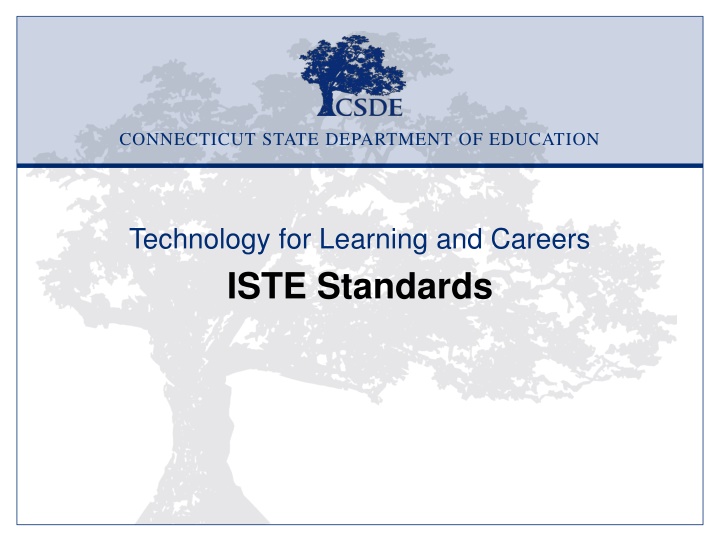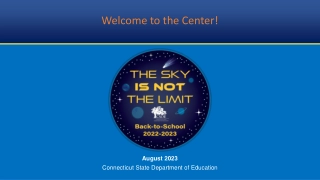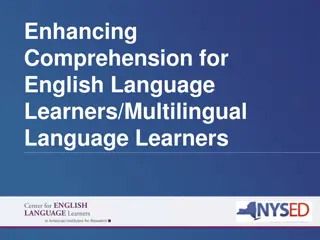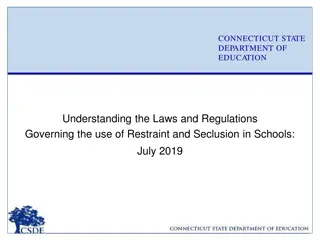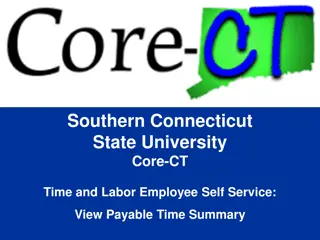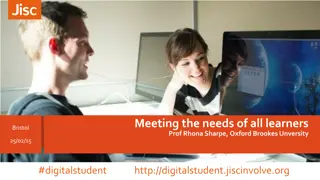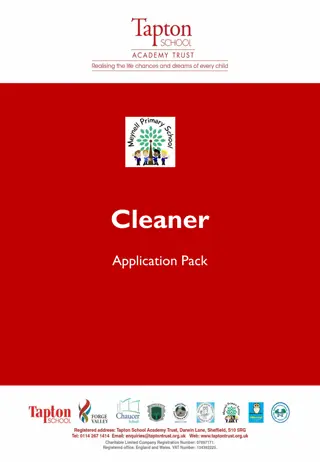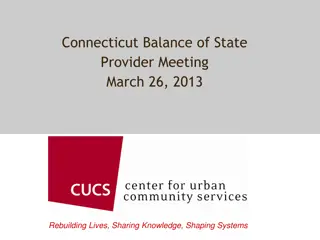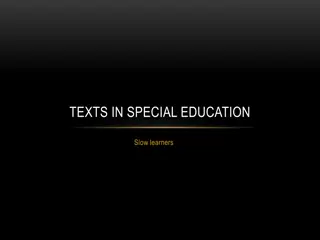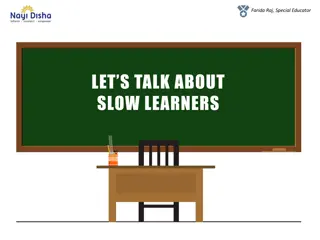Empowering Learners Through ISTE Standards in Connecticut Education
Explore the journey of Connecticut State Department of Education in adopting ISTE Standards for Students, enhancing technology competencies, and preparing learners for college and careers. Delve into the background, structure, and impact of these standards, emphasizing active student roles in goal-setting, competency achievement, and technology leverage. Discover the evolution of educational technology goals and plans, aligned with state initiatives and public acts, to enrich the learning experience for students across grade bands.
Download Presentation

Please find below an Image/Link to download the presentation.
The content on the website is provided AS IS for your information and personal use only. It may not be sold, licensed, or shared on other websites without obtaining consent from the author.If you encounter any issues during the download, it is possible that the publisher has removed the file from their server.
You are allowed to download the files provided on this website for personal or commercial use, subject to the condition that they are used lawfully. All files are the property of their respective owners.
The content on the website is provided AS IS for your information and personal use only. It may not be sold, licensed, or shared on other websites without obtaining consent from the author.
E N D
Presentation Transcript
CONNECTICUT STATE DEPARTMENT OF EDUCATION Technology for Learning and Careers ISTE Standards
A Timeline to Adoption 2000 2018 2016 2000 2017 Adoption of ISTE Standards ISTE released new Technology Standards for Students CT Commission for Education Technology established CT Commission for Education Technology released the State Educational Technology Goals and Plan 2017 2022 Pass Public Act 17-67 CONNECTICUT STATE DEPARTMENT OF EDUCATION
Background of the ISTE Standards CONNECTICUT STATE DEPARTMENT OF EDUCATION
ISTE Standards for Students Developed through years of research and input from educators, researchers, and educational leaders Provide a framework for defining the profile of a learner with the technology competencies that will prepare them for college and career Designed to be relevant over time and applicable to all grade bands Enhance and support other education standards and initiatives CONNECTICUT STATE DEPARTMENT OF EDUCATION
What are the Standards? CONNECTICUT STATE DEPARTMENT OF EDUCATION
The Structure of the Standards Standard name Standard statement Standard indicators CONNECTICUT STATE DEPARTMENT OF EDUCATION
A Closer Look at the ISTE Standards 2016 CONNECTICUT STATE DEPARTMENT OF EDUCATION
1 - Empowered Learner Students leverage technology to take an active role in choosing, achieving and demonstrating competency in their learning goals, informed by the learning sciences. Students have meaningful voice and choice in setting learning goals, choosing how to demonstrate competency. Technology can facilitate various kinds of feedback, both directly from other people and embedded in resources. Students learn how to troubleshoot and transfer tech knowledge, and their expertise should be utilized by teachers. CONNECTICUT STATE DEPARTMENT OF EDUCATION
2 - Digital Citizen Students recognize the rights, responsibilities and opportunities of living, learning and working in an interconnected digital world, and they act and model in ways that are safe, legal, and ethical. Students take ownership over their digital presence, rights and responsibilities. Focus on the opportunities, as well as the pitfalls, of being online. CONNECTICUT STATE DEPARTMENT OF EDUCATION
3 - Knowledge Constructor Students critically curate a variety of resources using digital tools to construct knowledge, produce creative artifacts, and make meaningful learning experiences for themselves and others. Includes assessing the veracity, quality, and usefulness of resources and handling access to an overwhelming amount of content. Includes curation as a valuable meaning-making and knowledge- sharing skill. Pushes students to create knowledge, not just absorb and regurgitate it. CONNECTICUT STATE DEPARTMENT OF EDUCATION
4 - Innovative Designer Students use a variety of technologies within a design process to identify and solve problems by creating new, useful or imaginative solutions. Pushes students to create artifacts or solutions using a deliberate process that accounts for calculated risks and constraints. Builds tolerance for ambiguity, perseverance, ability to work with open- ended problems (e.g., problems without one solution). CONNECTICUT STATE DEPARTMENT OF EDUCATION
5 - Computational Thinker Students develop and employ strategies for understanding and solving problems in ways that leverage the power of technological methods to develop and test solutions. Logically organizing and analyzing data. Automating solutions through algorithmic thinking (a series of ordered steps). Problem solving to achieve the most efficient and effective combination of steps and resources. Generalizing and transferring this problem-solving process to a wide variety of problems. CONNECTICUT STATE DEPARTMENT OF EDUCATION
6 - Creative Communicator Students communicate clearly and express themselves creatively for a variety of purposes using the platforms, tools, styles, formats and digital media appropriate to their goals. Students account for audience and message when choosing technology to use to share and present. Students use visualization, models, or simulations to communicate information. CONNECTICUT STATE DEPARTMENT OF EDUCATION
7 - Global Collaborator Students use digital tools to broaden their perspectives and enrich their learning by collaborating with others and working effectively in teams locally and globally. Builds project management and team-working skills, as well as self- knowledge about leadership style and preferences. Students work on authentic (e.g., real world ) problems and engage diverse perspectives and viewpoints. CONNECTICUT STATE DEPARTMENT OF EDUCATION
Implementation of the Standards CONNECTICUT STATE DEPARTMENT OF EDUCATION
Connections of the Standards CONNECTICUT STATE DEPARTMENT OF EDUCATION PAGE 16
Using the Standards The standards are used to guide: Curriculum mapping Lesson design Professional Learning School technology planning School improvement planning Teacher preparation CONNECTICUT STATE DEPARTMENT OF EDUCATION
Resources to Support Implementation ISTE Standards for Students Share and Find Exemplars with #ISTEinCT Recommendations for Policy Revisions (CT.gov/CTEdTech) Download ISTE Standards for Students: A Practical Guide for Learning with Technology eBook CONNECTICUT STATE DEPARTMENT OF EDUCATION
For Additional Information Visit the Connecticut State Department of Education Computer Science ISTE webpage: www.CT.gov/ISTE Visit the International Society for Technology in Education website: www.ISTE.org Attend the CECA Conference October 21 22 (cecact.org) CONNECTICUT STATE DEPARTMENT OF EDUCATION
Thank You CT Commission for Educational Technology Connecticut State Department of Education Doug Casey Executive Director Doug.Casey@ct.gov 860-622-2224 Melissa Hickey Director Melissa.Hickey@ct.gov 860-713-6680 CONNECTICUT STATE DEPARTMENT OF EDUCATION
